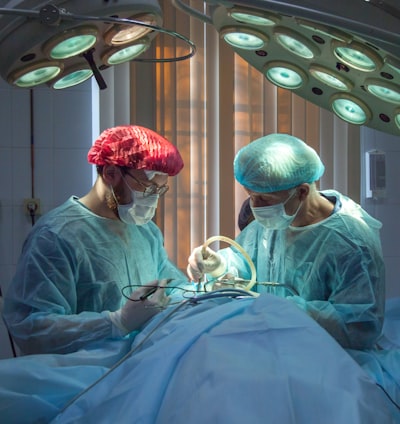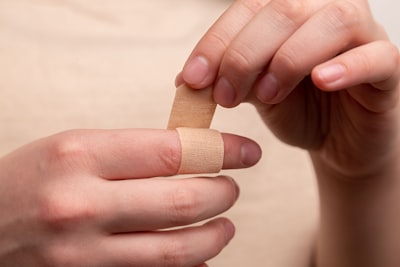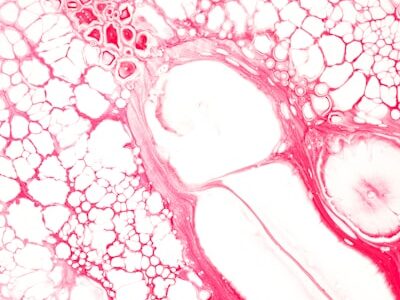Effective Ways to Stop Bleeding Fast

Key Highlights
- Bleeding is a common injury that can vary from small cuts to serious emergencies.
- It is important to know how to stop bleeding quickly and safely with first aid.
- The key step in controlling bleeding is to apply direct pressure.
- For severe bleeding, hemostatic agents and tourniquets can be needed.
- Also, knowing when to get medical help right away is very important.
Introduction

Bleeding is something that often happens when you get hurt. It can be mild or severe. Small cuts and scrapes usually heal by themselves and stop bleeding, but it is important to know how to handle minor bleeding in case of an emergency. Many homes and workplaces have first aid kits you can use to help control minor bleeding, making it crucial to have knowledge on how to stop mild bleeding and provide emergency treatment when necessary. If bleeding is severe or if you’re far from a hospital, you can be a critical part of emergency response if you keep a cool head and act fast. Knowing simple first aid and the basics of emergency medicine, including how to stop mild bleeding from a wound site and remove any visible objects from the general area of the wound, is important in protecting the skin wound and protecting yourself from exposure to another person’s blood. Before you try to stop the bleeding, it is important to take precautions to protect yourself from any potential exposure to another person’s small amount of blood. Remember, bleeding causes blood to collect in the wound site (wound hematoma), which can increase the risk of infection.
Understanding the Basics of Bleeding

Bleeding happens when blood leaks out of broken blood vessels. The body has a system of arteries, veins, and capillaries that helps move blood around. If these vessels get hurt, blood flow can be stopped, causing bleeding.
Small cuts and scrapes usually damage capillaries. This leads to slow and light bleeding. On the other hand, worse wounds can hurt arteries and veins. This can cause serious bleeding, which needs quick help. Knowing the difference between minor and severe bleeding is important for giving first aid effectively.
Types of Bleeding: Arterial, Venous, and Capillary

Bleeding can be split into three main types: arterial, venous, and capillary. Each type has its own features.
Arterial bleeding happens when arteries are hurt. Arteries carry oxygen-rich blood from the heart. This bleeding shows bright red blood that comes out in bursts with each heartbeat. It is a medical emergency and needs care right away.
Venous bleeding happens when veins are damaged. Veins bring oxygen-poor blood back to the heart. The blood is usually dark red and flows steadily, not spurting. Even though it is not as intense as arterial bleeding, it can still be severe and needs quick action.
Capillary bleeding is the most common. It involves the smallest blood vessels called capillaries. This bleeding looks like a slow drip or trickle of blood. It usually stops by itself or with little pressure.
Recognizing the Severity of a Wound
Assessing how bad a wound is important. It helps us decide what to do next. Minor cuts and scrapes are usually not serious. However, severe bleeding can quickly be dangerous if not treated right away.
Look for these signs of severe bleeding: blood that spurts or gushes, bleeding that does not stop after a few minutes of pressure, a large deep wound, and blood that soaks through bandages. Puncture wounds may look small but can hurt internal organs or blood vessels.
If someone shows signs of shock, such as pale or clammy skin, a fast pulse, dizziness, or confusion, it is a serious situation. This requires medical help right away.
Initial Steps to Take When You or Someone Else is Bleeding
In case of bleeding, quick action is very important. The first thing to do is control the blood loss. Make sure you are safe and the injured person is too before you help them.
If you can, wash your hands well and put on gloves to reduce the chance of infection. After you have taken the safety steps, use a clean cloth or sterile dressing to put direct pressure on the wound.
Ensuring Safety: How to Protect Yourself and the Injured Person

Before helping someone with an injury, think about your safety and that of the injured person. If there is a chance of coming into contact with blood, make your safety the priority.
Wearing medical gloves helps keep you safe by stopping the spread of infections. If you don’t have gloves, use layers of clean cloth, a plastic bag, or any clean material to keep the blood away from your skin.
Also, know that helping an injured person means stopping any further injury. Make sure the area is safe and do not move the injured person unless needed. This is important, especially if there could be a head or spinal injury.
The Importance of Pressure: First Line of Action in Bleeding Control
Applying direct pressure to a wound is the best way to stop bleeding. This method slows blood flow and helps the body create a clot.
You can use a clean cloth, a sterile dressing, or even your bare hands if needed. Press firmly and keep pressure on the bleeding spot for at least 15 minutes. This gives enough time for a clot to form.
If blood soaks through the first dressing, do not take it off. Removing it could break the clot. Instead, just put more layers on top and keep applying pressure.
Advanced Techniques to Stop Bleeding
Direct pressure works well for most bleeding. However, if there is severe or uncontrolled bleeding, you might need other methods to stop the bleeding. Hemostatic agents can be very useful in these cases. They help form clots more quickly, which helps control the bleeding sooner. In serious situations, like severe bleeding from an arm or leg, using a tourniquet, a cord or band that is tightened around a limb to stop the flow of blood through a vein or artery, may be needed.
Using Hemostatic Agents for Severe Wounds
In cases of serious wounds with a lot of blood loss, hemostatic agents are very helpful. They assist in quickly controlling bleeding. These agents have special materials that speed up the body’s natural clotting, helping to stop bleeding faster than just applying direct pressure.
Hemostatic agents come in different forms. You can find them as powders, granules, or dressings that already have the agents in them. They work by putting more clotting factors right where the bleeding is, which helps to form a strong clot.
It’s important to know that you should use hemostatic agents along with direct pressure, not instead of it. They are useful especially when direct pressure does not work well alone or when it’s hard to maintain pressure.
When and How to Apply a Tourniquet
A tourniquet is a constricting band used as a last resort to control life-threatening bleeding from a limb. It works by completely stopping blood flow to the injured area.
Tourniquets should only be used when absolutely necessary, such as in cases of amputation, severe bleeding that can’t be controlled by other methods, or when there’s a risk of further injury if pressure is applied directly to the wound.
Applying a tourniquet is a simple but critical procedure. Here’s a step-by-step guide:
| Step | Action | |
| 1 | Place the tourniquet 2-3 inches above the wound, avoiding placement over joints. | |
| 2 | Tighten the tourniquet until the bleeding stops completely. | |
| 3 | Secure the tourniquet in place and note the time of application. | |
| 4 | Do not loosen or remove the tourniquet once applied. |
Conclusion
In conclusion, it’s important to know the basics of bleeding. Understanding how to react can really help in emergencies. You might need to apply pressure or use advanced methods, like hemostatic agents or tourniquets. Acting quickly is key. Always remember that safety comes first. If needed, seek medical attention for proper care. Being prepared and having the right knowledge will help you handle bleeding situations well. Stay informed, stay alert, and focus on safety at all times.
FAQ
What should you never do when trying to stop bleeding?
Avoid using hydrogen peroxide or rubbing alcohol. They can slow down the healing process. Also, do not put direct pressure with bare hands. This helps reduce the chance of infection.
In an emergency, if you do not have sterile dressings, you can use clean cloths, towels, or plastic bags. Just fold them up to make a thicker pad that can absorb more.
When should I seek medical attention for a bleeding wound?
If you have severe bleeding, see signs of shock, or have bleeding that continues after pressing for 15 minutes, get medical attention right away. If you think you have internal bleeding, go to the emergency room or call your local emergency number for help.
https://order.store.mayoclinic.com/flex/mmv/incon01
https://www.albertahealthservices.ca/assets/healthinfo/link/index.html
https://books.google.co.uk/books
https://www.albertahealthservices.ca:443/findhealth/default.aspx
